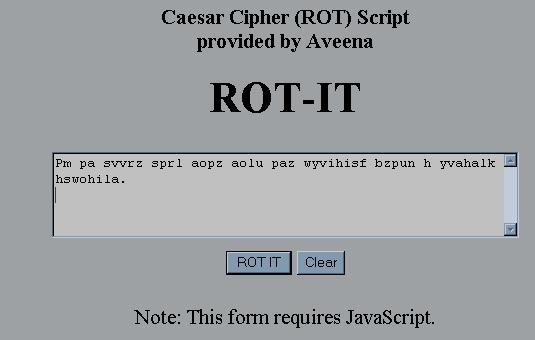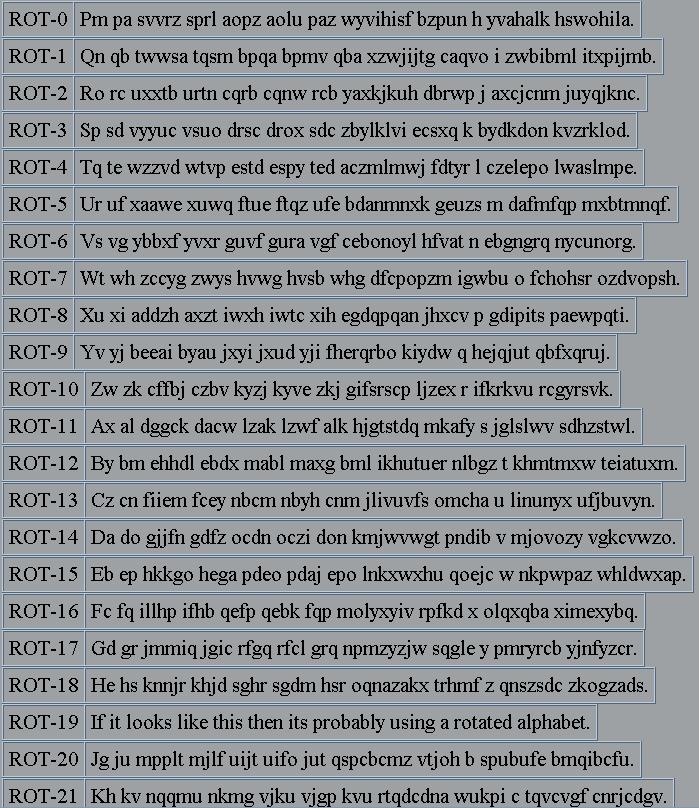
Example
ROT-1: Gvo xjui SPU, dpef boe efdpef
The unfiction tool is here: http://www.unfiction.com/resource/rot-it.html
It codes and decodes all possible ROT combinations. Simply enter the
text to
(en/de)code, and hit the button.

Screen capture of partial result:

That covers the basics, so happy ROT-ing!
It is a monoalphabetic cipher - a cipher where each symbol (letter) is replaced with some other symbol (letter) based on some rule. The next level of sophistication is the simple substitution cipher, where each symbol (letter) is replaced with another symbol (letter) based only on what the letter was (so for example a B might always be enciphered to a G, and a D to an H).
Breaking this requires a little more effort. The standard technique is use letter frequency analysis - counting up the symbols and noting that certain letter sin the English language occur more frequently than others. E is the most frequent letter, followed by T. It is also useful to note where double letters occur and to remember the most common words in the Enlish language, for example, T_E almost always decodes to THE.
It also requires more text to break than the Caesar (or ROT) cipher. It is thought that at least 40 characters are usually required for any degree of accuracy.
The next level up is the Vigenere cipher which use a key word to control a Caesar (ROT) cipher. This falls to a combination attack that uses the index of co-incidence to tell how long the key word is (and what language the message is in) and letter frequency analysis to recover the message